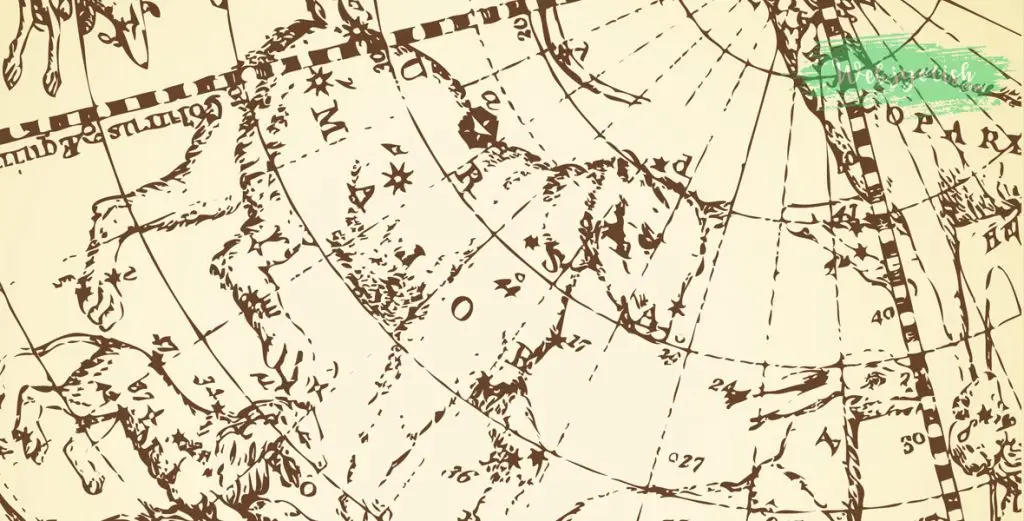In astrology, the term “Ascendant” refers to the sign that was ascending on the eastern horizon at the exact moment of one’s birth. This is also known as the “Rising Sign.” Unlike the Sun sign, which is determined by one’s date of birth, the Ascendant, or Ascendant Meaning in Astrology, is highly specific to the exact time and location of birth, making it a unique component of an individual’s astrological profile.
Sun signs are only the beginning of astrology and provide only general information. To understand your birth chart, you need an in-depth understanding of ascendants, planets, and houses.
Understanding the Ascendant Meaning in Astrology can provide deeper insights into your personality and life path.
Your ascendant, or rising sign, is the sign that was rising over the horizon at the moment you were born. During a 24-hour period, each of the 12 signs rises over the horizon. Thus, each sign rises over the horizon for approximately two hours each day. In addition, whichever sign the sun is, when it rises, will be the rising sign for that day.
The ascendant is considered both the image that is presented to the outside world and the way you express yourself, which includes your needs, personality traits, and physical characteristics. Your sun sign and ascendant are usually different. This is why your ascendant is experienced as a “mask;” it hides your true self, your sun sign.
The ascendant also represents the person you are becoming. It indicates the traits and skills you are learning to develop over the course of your lifetime. Your ascendant may be more obvious to others than to yourself and may be revealed in your clothing or hairstyle.
How the Ascendant Fits Into Astrology
The Ascendant is considered one of the “Big Three” in astrology—the trio of key components that include the Sun sign, Moon sign, and Ascendant. While the Sun sign represents core identity and ego, and the Moon sign reflects emotional nature, the Ascendant embodies how a person appears to others, their outward demeanor, and their first impressions on the world.
Influence on the Horoscope
In a natal horoscope or birth chart, the Ascendant serves as the starting point for the chart, setting the framework for the house system used in Western astrology. It can influence personality traits and even physical appearance, offering insights into how individuals present themselves and how they are perceived by others.
Connection with Zodiac
Every individual’s Ascendant corresponds to one of the twelve zodiac signs (Aries, Taurus, Gemini, etc.), each adding its unique flavor to the personality. For instance, someone with Leo rising might come across as confident and charismatic, even if their Sun sign is more introverted.
Understanding one’s Ascendant, alongside other astrological elements like the Sun and Moon signs, can provide a deeper, more nuanced understanding of both personal identity and interpersonal dynamics.
Planets in Astrology :
The planets are celestial bodies that move through the zodiac in predictable ways. In astrology, the sun and the moon are considered planets because, from the earth’s vantage point, they also move across the sky. Thus, in astrology, there are ten planets: Mercury, Venus, Mars, Jupiter, Saturn, Uranus, Neptune, and Pluto, as well as the sun and the moon.
Each planet has a symbolic “glyph” on the chart those represent the various energies of a person, including intelligence, emotionality, consciousness and unconsciousness, soul, will, vitality, and desires. There are three types of planets: personal, social, and transpersonal. The personal planets include the sun, the moon, Mercury, Venus, and Mars; the social planets include Jupiter and Saturn; and the transpersonal planets include Uranus, Neptune, and Pluto.
The moon, as a planet, has the special property of nodes. The nodes represent moving points that relate to the moon’s orbit around the earth. In astrology, the south node represents the legacy of your past, while the north node represents your potential for growth and for what lies in the future.
Each planet rules one or more of the signs, meaning that the planet is in charge of that sign. In addition, certain planets and certain signs share certain characteristics. Some people have a number of planets aside from their sun in the same sign, but in a sign other than their sun sign. Such people will show strong characteristics of that different sign. Other people may have a lot of planets in a certain area of their chart. As such, they may expend a great deal of energy in that particular area of their life.
In horoscope charts, houses are the places where everything in your life occurs. Each house occupies a place in relation to the horizon at the time you were born. Below the horizon are the areas which are invisible but, nevertheless, important. In the houses below the horizon is your personal development, which includes such areas as your personality, knowledge, creativity, health, resources, and responsibilities.
Above the horizon are the areas which are visible. These areas represent your development in the world and include goals, social concerns, relationships, shared resources and, interestingly, your unconscious.
Planets, moving about the signs, appear in houses. The planets show how you do what you do in certain areas of your life. In addition, certain planets and signs also are associated with certain houses. Another concept associated with houses is cusps. Cusps are the beginning of each house, and cusps separate the houses from each other. Overall, the most important information about you starts with which house and sign a planet are in. Who you are is defined by your unique combination of planets, signs, and houses.



